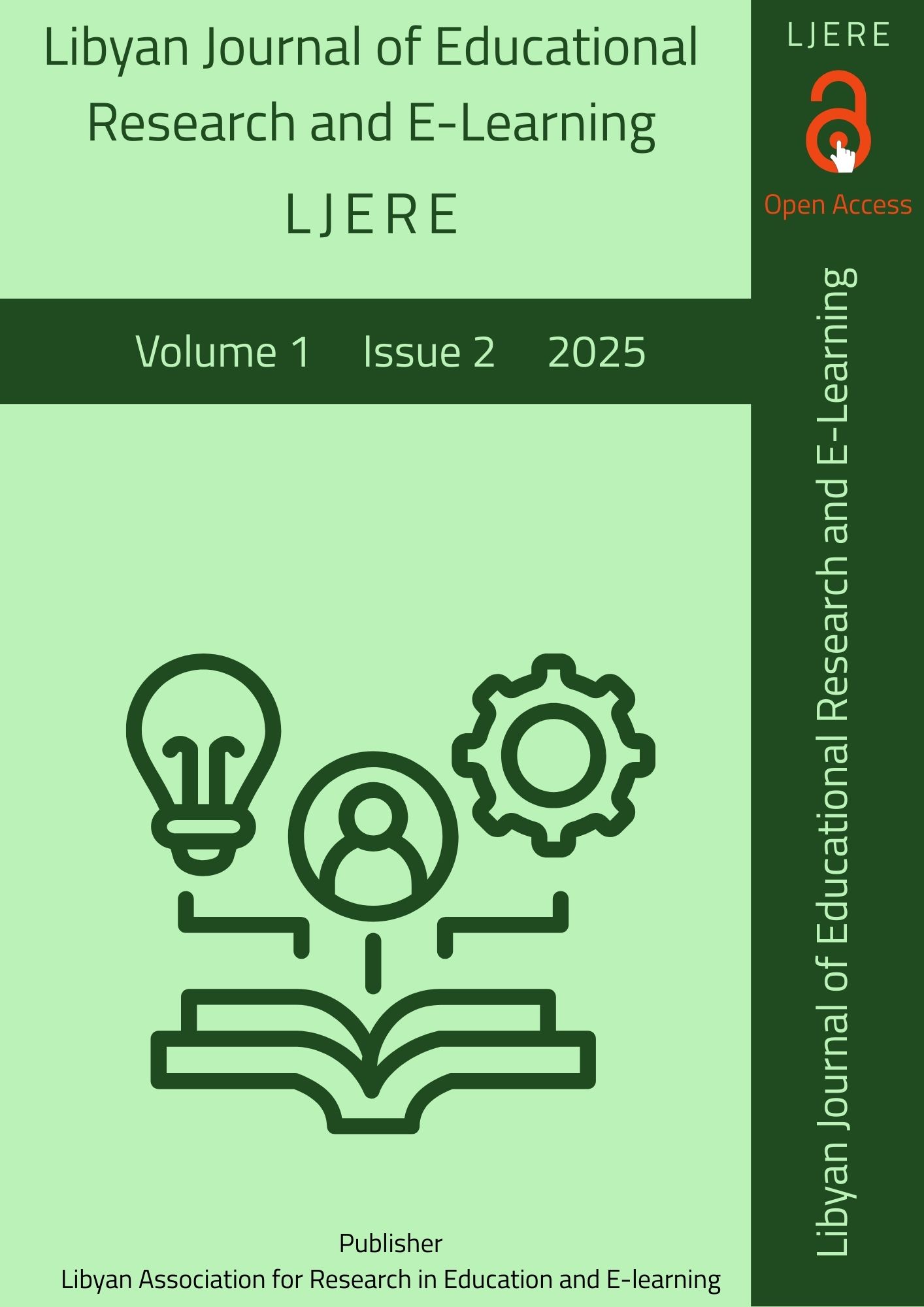The Impact of Peer Interaction on Extensive Reading Engagement: A Study of English Department Students at the Faculty of Languages, Elmergib University
DOI:
https://doi.org/10.65417/ljere.v1i2.40الكلمات المفتاحية:
Peer Interaction، Extensive Reading، Student Engagement، Sociocultural Theory، Self-Determination Theory، Communities of Practice، Scaffoldingالملخص
For many years, Extensive Reading (ER) has been an important part of language learning. It is praised for its ability to improve reading fluency, vocabulary, and overall language skills by letting students read a lot of understandable, self-chosen literature over a long period of time. Day and Bamford (2002) made it very clear that extensive reading (ER) is a personal and emotional activity, with student choice and enjoyment of reading being the most important factors. This method, while effective, often envisioned the reader in isolation.
A substantial paradigm shift has transpired, propelled by the recognition that learning is fundamentally social. Based on Vygotsky's (1978) sociocultural theory, an increasing amount of research convincingly asserts that the strategic incorporation of student interaction is not a deviation from the fundamental principles of ER, but rather a significant enhancement. This comprehensive review consolidates the evolving literature, analysing the theoretical foundations, various modalities, and empirical evidence illustrating how interaction transforms ER from a solitary act into a dynamic, collaborative process that significantly enhances motivation, deepens understanding, promotes critical thinking, and establishes a community of practice
المراجع
1. Bamford, J., & Day, R. R. (Eds.). (2004). Extensive reading activities for teaching language. Cambridge University Press.
2. Braun, V., & Clarke, V. (2006). Using thematic analysis in psychology. Qualitative Research in Psychology, 3(2), 77–101.
3. Cho, K.-S., & Kim, H.-J. (2017). the effects of extensive reading with a social media platform on reading achievement and student attitudes. Multimedia-Assisted Language Learning, 20 (4), 132-154.
4. Daniels, H. (2002). Literature circles: Voice and choice in book clubs and reading groups. Stenhouse Publishers.
5. Day, R. R., & Bamford, J. (2002). Top ten principles for teaching extensive reading. Reading in a Foreign Language, 14(2), 136-141.
6. Deci, E. L., & Ryan, R. M. (2000). The "what" and "why" of goal pursuits: Human needs and the self-determination of behavior. Psychological Inquiry, 11(4), 227-268.
7. Fredricks, J. A., Blumenfeld, P. C., & Paris, A. H. (2004). School engagement: Potential of the concept, state of the evidence. Review of Educational Research, 74(1), 59–109.
8. Krashen, S. D. (2004). The power of reading: Insights from the research (2nd Ed.). Libraries Unlimited.
9. Lave J., & Wenger, E. (1991). Situated learning: Legitimate peripheral participation. Cambridge University Press.
10. Nishino, T. (2018). Motivation to read extensively: A case study of a Japanese high school student. Reading in a Foreign Language, 30(1), 165-182.
11. Pilgreen, J. L. (2000). The SSR handbook: How to organize and manage a sustained silent reading program. Boynton/Cook Publishers.
12. Robb, T. (2022). The 'Social' in Extensive Reading: How students can benefit from interacting with peers about their reading. Reading in a Foreign Language, 34(2), 353-367.
13. Shelton-Strong, S. J. (2012). Literature circles in ELT. ELT Journal, 66(2), 214-223.
14. Swain, M. (2000). The output hypothesis and beyond: Mediating acquisition through collaborative dialogue. In J. P. Lantolf (Ed.), Sociocultural theory and second language learning (pp. 97–114). Oxford University Press.
15. Vygotsky, L. S. (1978). Mind in society: The development of higher psychological processes. Harvard University Press.
16. Yamashita, J. (2013). Effects of extensive reading on reading attitudes in a foreign language. Reading in a Foreign Language, 25(2), 248-263.







